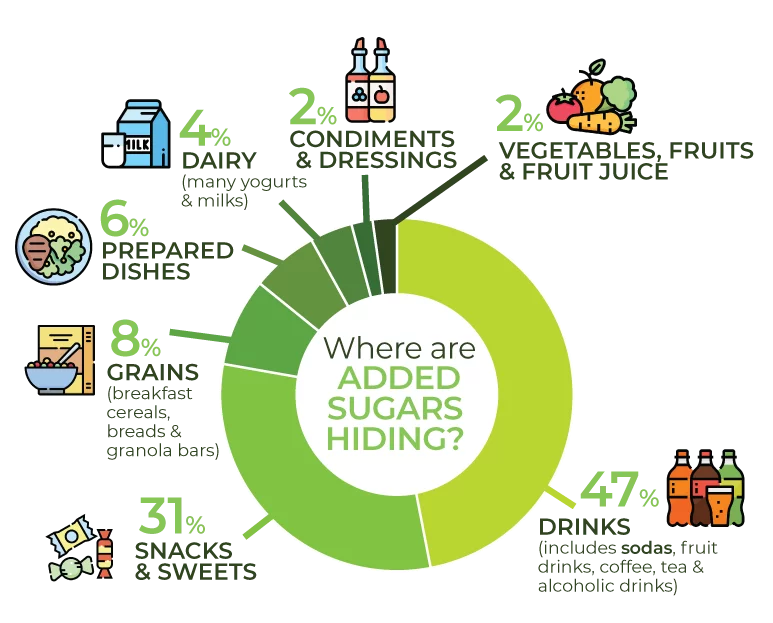
Sugar occurs naturally in some foods, but too much-added sugar can be harmful to your health. Try to limit added sugars to less than 10% of your daily calories.
Sugar has become a ubiquitous part of our diet and is often hidden in unsuspecting foods and drinks. Knowing the sources of sugar in our daily eating habits is important to making informed choices that lead to a healthier lifestyle.
Both the intake of sugar-sweetened drinks and overall sugar consumption have been related to an increased risk of developing type 2 diabetes; obesity is a major risk factor for the disease. The only way to know for sure whether you have diabetes is to be tested for it.
Sugar in beverages
- Soft drinks and fruit juices: These sugary drinks can contain a significant amount of added sugar, which contributes to high-calorie intake.
- Flavored coffees and teas: Syrups, flavored creams, and sweetened mixtures can convert your caffeine fix into a sugary comfort.
- Sports drinks and energy drinks: These beverages, which are frequently promoted as healthy, might contain significant levels of added sugars. Even the zero calorie version has a lot of sodium, which should be consumed in moderation as well.
- Alcoholic drinks: There may be anything from 5 to 15 grams of sugar in a single glass of sweet wine. The amount of sugar in a cocktail varies greatly from one recipe to the next. Mixers, fruit juices, and syrups added to cocktails may significantly increase the sugar content. Beer and dry wines have a lower sugar content.
Processed and packaged foods
- Breakfast cereals: Many popular breakfast cereals include a lot of sugar. Instead, choose low-sugar or whole-grain selections.
- Condiments and dressings: Hidden sugars can be found in ketchup, salad dressings, barbecue sauce, teriyaki sauce, and some marinades. Look for low-sugar alternatives or create your own.
- Snack foods: It seems obvious, but most cookies, candies, and granola bars, can contain large amounts of added sugars. Examine the labels and opt for healthier snacks.
“Healthy” foods
- Yogurt: Some flavored yogurts have a high sugar content. Choose plain yogurt and mix it with fresh fruit for natural sweetness.
- Smoothies and smoothie bowls: Pre-made or store-bought smoothies are loaded with sugar. Make your own at home, so you can control how much sugar is in it..
- Dried fruits: Dried fruits, while natural, can also have a high sugar content. Consume them in moderation as part of a healthy diet.
- White bread, pastries, and baked goods: These foods frequently have additional sugars. Choose whole-grain products or make your own with healthier ingredients.
You can reduce your sugar intake by reading food labels, eating whole, unprocessed foods, and being conscious of the sweeteners used in your favorite meals and drinks. Choose natural sweeteners, such as fresh fruits, and gradually minimize your dependency on added sugars. Remember that little changes can result in significant increases in your overall health.


